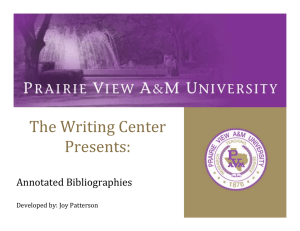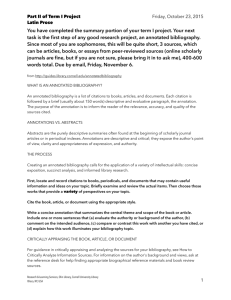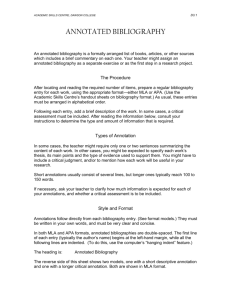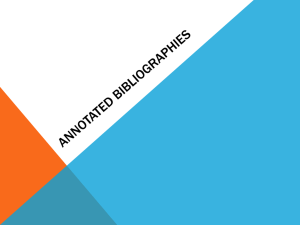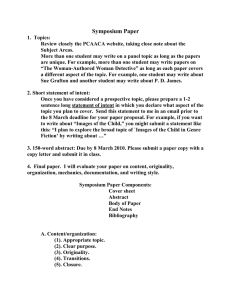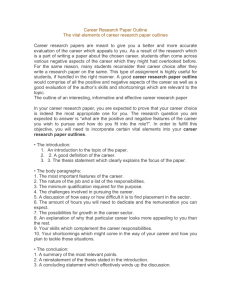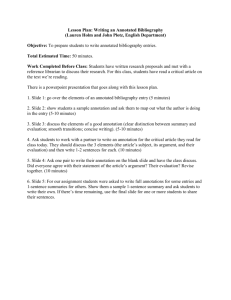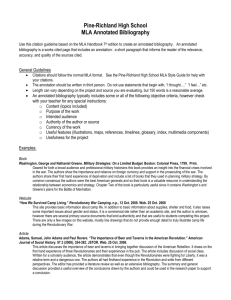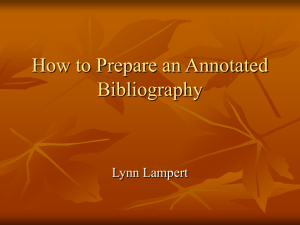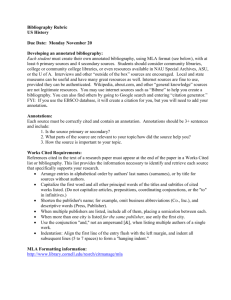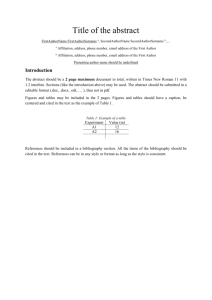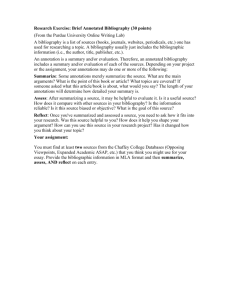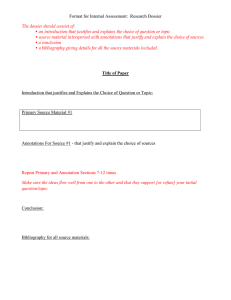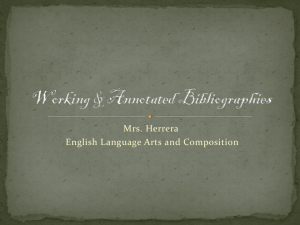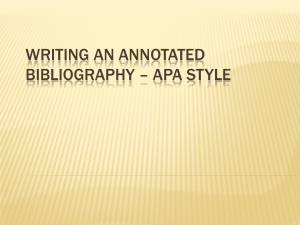How to Prepare an Annotated Bibliography
advertisement
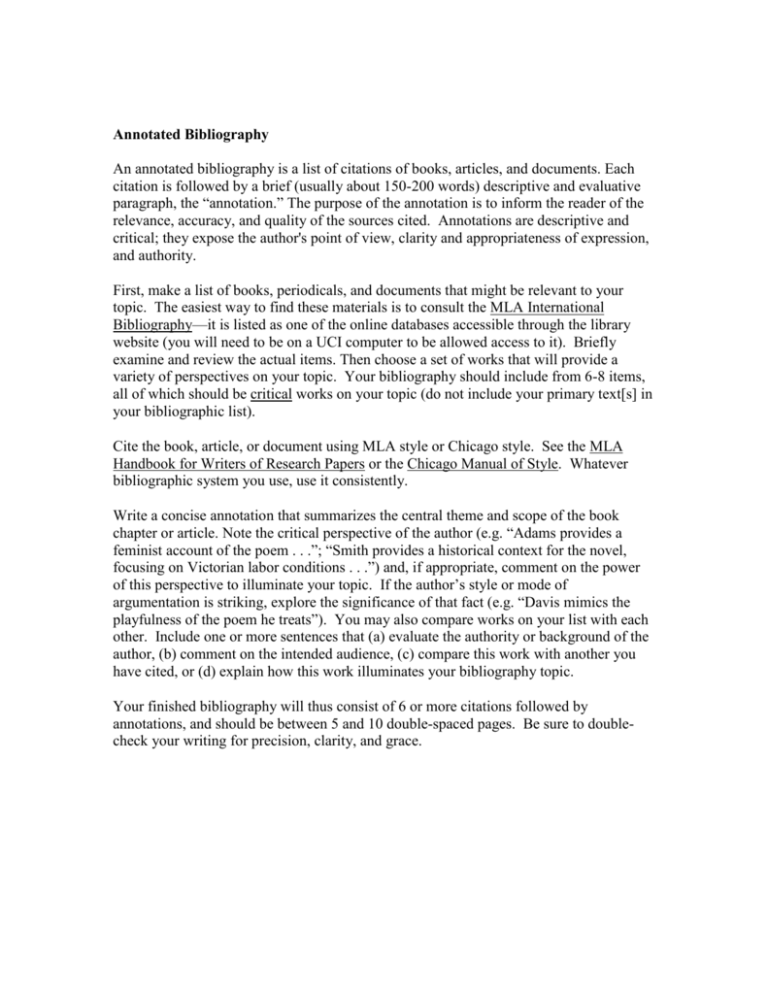
Annotated Bibliography An annotated bibliography is a list of citations of books, articles, and documents. Each citation is followed by a brief (usually about 150-200 words) descriptive and evaluative paragraph, the “annotation.” The purpose of the annotation is to inform the reader of the relevance, accuracy, and quality of the sources cited. Annotations are descriptive and critical; they expose the author's point of view, clarity and appropriateness of expression, and authority. First, make a list of books, periodicals, and documents that might be relevant to your topic. The easiest way to find these materials is to consult the MLA International Bibliography—it is listed as one of the online databases accessible through the library website (you will need to be on a UCI computer to be allowed access to it). Briefly examine and review the actual items. Then choose a set of works that will provide a variety of perspectives on your topic. Your bibliography should include from 6-8 items, all of which should be critical works on your topic (do not include your primary text[s] in your bibliographic list). Cite the book, article, or document using MLA style or Chicago style. See the MLA Handbook for Writers of Research Papers or the Chicago Manual of Style. Whatever bibliographic system you use, use it consistently. Write a concise annotation that summarizes the central theme and scope of the book chapter or article. Note the critical perspective of the author (e.g. “Adams provides a feminist account of the poem . . .”; “Smith provides a historical context for the novel, focusing on Victorian labor conditions . . .”) and, if appropriate, comment on the power of this perspective to illuminate your topic. If the author’s style or mode of argumentation is striking, explore the significance of that fact (e.g. “Davis mimics the playfulness of the poem he treats”). You may also compare works on your list with each other. Include one or more sentences that (a) evaluate the authority or background of the author, (b) comment on the intended audience, (c) compare this work with another you have cited, or (d) explain how this work illuminates your bibliography topic. Your finished bibliography will thus consist of 6 or more citations followed by annotations, and should be between 5 and 10 double-spaced pages. Be sure to doublecheck your writing for precision, clarity, and grace.

